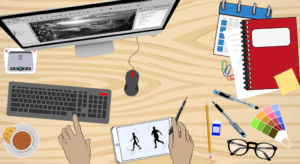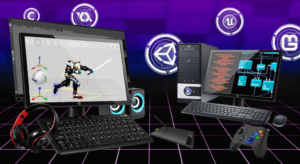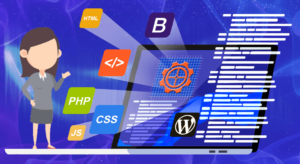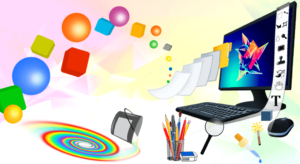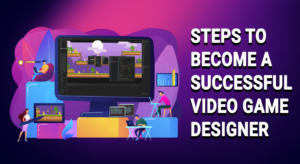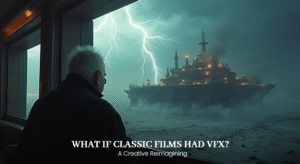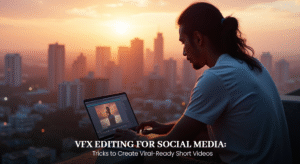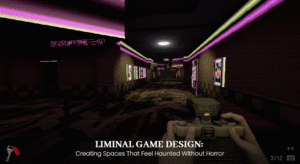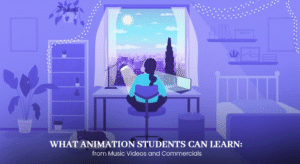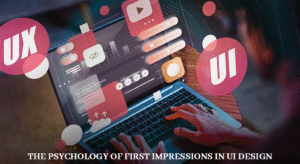
AI in VFX: The Future of Automated Compositing and Rotoscoping
The visual effects industry is changing with each passing day, and the latest development has been the inclusion of artificial intelligence. AI is transforming conventional ways by making complicated processes simple and unlocking new avenues for creativity. Most future artists look for a VFX editing course that combines art and these emerging technologies to become superior in the cutthroat VFX market.
A New Era in Visual Effects
Visual effects have traditionally depended on complex, time-consuming workflows. Today, AI is rewriting the script. Rather than spending hours on monotonous tasks, artists can spend their time innovating and storytelling. Let’s see how AI is revolutionising automated compositing and rotoscoping, and why it matters to VFX professionals.
Understanding AI in VFX
Artificial intelligence in visual effects uses deep neural networks and machine learning to study footage and forecast motion. These technologies use large datasets, learn patterns, and merge visual elements smoothly. This use of AI in VFX results in quicker turnaround time and more stable, high-quality output.
Key Aspects of AI in VFX
- Machine Learning Algorithms: These models learn from enormous amounts of information to discover patterns and forecast results, guaranteeing consistent performance even under complex situations.
- Deep Neural Networks: Imitating the human brain, these networks are good at object detection and motion tracking, both essential for good compositing.
- Automation Tools: AI-based software is capable of performing tasks such as object tracking and mask generation, greatly minimising the workload.
Automated Compositing: Transforming Workflows
Compositing is conventionally an intensive labour process where several layers are combined to form a final image. AI now has the significant function of automating this process:
- Efficient Workflows: AI software automatically aligns and merges layers, minimising the requirement to make frequent manual adjustments.
- Increased Accuracy: Smart algorithms pick up on fine edges and details, making for smoother visual element integration.
- Error Reduction: Automation reduces human errors, providing consistent quality in various projects.
These developments not only increase efficiency but also give artists more time to play with original thoughts and intricate effects.
Rotoscoping Revolutionised
Rotoscoping—the process of creating precise masks for moving objects—is one of the most demanding aspects of VFX. AI is now simplifying rotoscoping in several ways:
How AI Augments Rotoscoping
- Automated Object Tracking: AI can recognise and track objects over a sequence, significantly eliminating frame-by-frame tweaking.
- Improved Edge Smoothing: AI generates more precise masks with superior detection algorithms, which smoothly merge subjects into diverse backgrounds.
- Time Efficiency: Work that took hours before can now be accomplished in a much shorter time, allowing artists to meet deadlines.
Advantages To VFX Artists
- Improved Productivity: Through automating repetitive processes, artists can focus on improving the overall visual storytelling.
- Consistent Quality: The accuracy of AI makes sure that each frame has a consistent high quality.
- Creative Freedom: As routine work is handled by AI, experts can try out novel methods without worrying about technical limitations.
The Broader Impact of AI in VFX
The benefits of AI extend beyond individual tasks to transform the entire production process. Here are some major advantages:
- Improved Efficiency: Automation reduces the time of production, allowing for the possibility to deliver projects quicker.
- Cost Savings: Minimising manual labour decreases total expense—a plus for large studios as well as on independent projects.
- Innovative Storytelling: Breaking artists free from mundane tasks enables them to concentrate on storytelling and creative innovation.
- Scalability: Artificial intelligence software can handle intricate projects without compromising on quality, facilitating easier scaling when project requirements surge.
- Uniform Quality: Uniform use of AI-based methods guarantees visual effects remain uniform throughout production.
Challenges and Future Outlook
Despite its benefits, AI integration in VFX is not without challenges. Understanding these hurdles is key to effectively leveraging AI technologies.
Technical and Creative Limitations
- Learning Curve: It takes training and adjustment to integrate AI tools into existing workflows.
- Complicated Scene Problems: Very complicated scenes with off-the-beaten-track lighting or very fast motions could still require the intervention of humans.
- Risk of Over-Automation: Over-reliance on AI could water down the human touch that adds depth and feeling to visual storytelling.
Ethical and Artistic Considerations
- Maintaining Creative Control: Automation needs to be weighed against human management to preserve the individual creative vision of every project.
- Balancing Tradition with Innovation: While AI offers many advantages, traditional techniques remain invaluable for capturing artistic subtleties.
In the future, as AI software continues to improve, it will probably overcome these limitations, enabling VFX artists to further advance their work.
Real-World Uses of AI in VFX
The revolutionary potential of AI is seen across numerous real-world use cases in film, television, and advertising:
- Real-Time Compositing: AI makes real-time adjustments on live shoots possible, maximising on-set production efficiency.
- Immersive Visual Storytelling: AI automates mundane tasks, allowing directors and artists to focus on storytelling.
- Dynamic Rotoscoping: AI-based tools dynamically adjust to movement, making seamless integration possible even in complicated sequences.
For creators and hobbyists venturing into VFX editing, these innovations are not merely a technical process but an opening to fresh creative avenues.
Embracing Training and Education
In a rapidly evolving industry such as VFX, it is important to stay abreast of the latest technology. Ongoing education is necessary for individuals who want to stay competitive and innovative. Specialised courses offer an immersive learning experience that covers both traditional techniques and modern AI tools.
The Arena Animation Advantage
For those ready to step into the future of VFX, Arena Animation Park Street provides an ideal platform. Their Certified Professional in VFX Compositing & Editing course is designed to help students harness AI technology effectively while preserving the artistry of visual effects.
Course Benefits
- Industry-Relevant Curriculum: Be taught by professionals who are currently defining the VFX industry.
- State-of-the-Art Tools: Get hands-on practice with the newest AI-powered software.
- Practical Projects: Build a solid portfolio that showcases your capacity to merge innovative methods with practical projects.
- Networking Opportunities: Meet with people and experts that have an interest in innovation for VFX.
This course is ideal for anyone wishing to learn VFX editing to perfection in a manner that combines traditional methods with current technology to provide a thorough education suitable for today’s industry.
Conclusion
Artificial intelligence is transforming the VFX business, redefining everything from automated compositing to groundbreaking rotoscoping. The influence of AI goes far beyond efficiency—it enables artists to concentrate on storytelling and creative innovation, raising the quality and consistency of visual effects across the board.
The future of VFX is in balancing human imagination with technological progress. Despite the problems, the prospects offered by AI are vast. For both emerging and established professionals, ongoing learning is the passport to success in this ever-evolving industry.
Arena Animation’s Certified Professional in VFX Compositing & Editing program provides a special combination of hands-on training and the latest insights, equipping students with the skills to succeed in an industry where technology and art come together.


